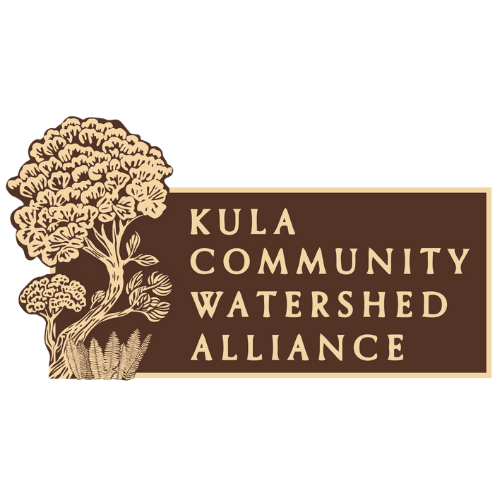7 Acres Stabilized in Kula!
After significant organizing, planning, and collective fundraising efforts in our first months as an Alliance, we were able to complete our first two projects in November and December, stabilizing over 7 acres of burned land, preventing landslides and damaging runoff in key places before the winter rains. In order to do this, we generated over 3,000 cubic yards of wood chips, sourced from nearby invasive trees that are considered hazardous fire fuels. These chips were either used on-site or transported to nearby areas of the burn scar.
We have many more acres ahead, and our soil stabilization efforts will enthusiastically continue into 2024, doing what we can as funds allow.
Have a look below at some of the key moments in our recent work:
First, a test plot of log erosion barriers and woodchips was installed along the burn scar to simulate rain events and evaluate performance of soil stabilization practices. Invasive materials that were burned, damaged, or downed on August 8th were used. Local, state, and federal officials were brought to this test plot to help shape recovery plans and show a method of stabilization that will last and will support regenerative land restoration. The funds to do this project were completely donated by the landowner, who is a member of the Alliance.
After enough funds were raised, the Neighborhood Council voted to proceed with its first project: stabilizing the 1.3 acre burn scar at Kula Sandalwoods Inn & Cafe on Haleakalā Highway. A native Hawaiian-owned local business, the Sandalwoods ʻohana was an ideal partner as we navigated our first project.
In October and November, volunteers and hired crews trucked 700 cubic yards of mulch made from nearby Black Wattle trees to the burn scar at Kula Sandalwoods Inn & Cafe on Haleakalā Highway.
These woodchips were carefully spread to a depth of at least 3 inches, covering the entire burn scar with a blanket of protection. This treatment has held up beautifully in recent heavy rains.
Our second priority was to stabilize a .5 acre burn area on lower Kulalani Drive, right along the gulch next door to several burned homes. This area posed a significant erosion hazard and was identified as a location of concern by our Advisors.
For this project, a nearby area of previously downed Eucalyptus trees served as the woodchip source, and 300 acres were generated to cover the burn scar.
The entire burn scar was covered in woodchips, and log erosion barriers were installed to slow water on the slopes.
As a part of our practice, anywhere we clear source material to make wood chips to truck to the burn scar, we ensure that those lands are also stabilized before we leave the property. All told, 5.5 acres of invasive fire fuels were cleared for our first two projects, and all of that acreage was also treated with a 3-inch blanket wood chips as an erosion mitigation best practice, bringing our total treated area to just under 7 acres.
Looking Ahead
As 2023 comes to a close, we’re looking ahead to 2024 with hopes to continue stabilization and begin stategically installing deer fence on stabilized lands so planting can begin. Stay tuned!










